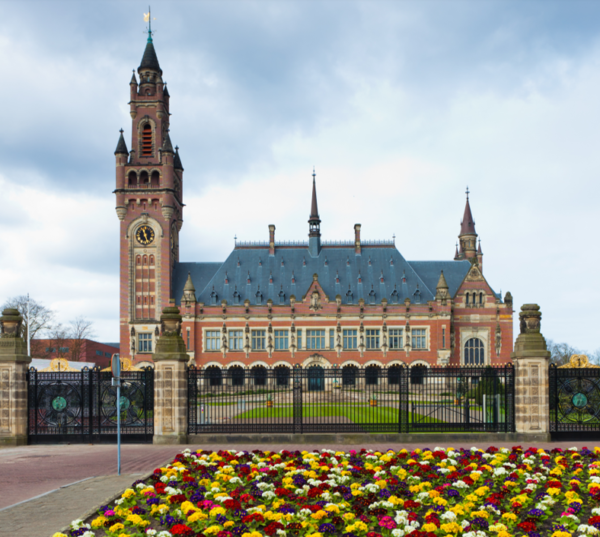The Role of Human Rights Law in Climate Obligations
Reading time : 5 minutes
This article was originally published in Open Global Rights, as part of a series of articles on the Right to a Healthy Environment.
The International Court of Justice’s current deliberations on the scope of climate change obligations should draw on human rights law, including the right to a healthy environment.
In a few months, the International Court of Justice (ICJ) will consider the scope and content of the obligations of states to address climate change. Its advisory opinion will interpret many areas of public international law, including the United Nations Framework Convention on Climate Change (UNFCCC) and the Paris Agreement. That area of law, incorporating the just-concluded conference of the parties (COP28), is significant to the case, but the court should not ignore obligations arising from other areas of law, including but not limited to the right to a clean and healthy environment.
The ICJ is hearing this case in response to a request from the UN General Assembly, which noted in 2023 its profound alarm that emissions of greenhouse gases (GHGs) continue to rise. The General Assembly has requested advice on:
The obligations of states to ensure the protection of the climate system from GHGs for states and for present and future generations; and
The legal consequences of these obligations.
The court is due to receive written submissions from parties in March 2024.
The General Assembly noted, among other things, that it had recognized the human right to a clean, healthy, and sustainable environment in 2022. The advisory opinion can help to clarify the content of this right in two contexts. First, evidence that the right is currently not met by states comes from the widespread adverse impacts and related losses and damages to nature and people. While litigants may find it difficult to point to breaches of environmental rights in abstract contexts, the calamitous weather extremes and alarming increases in temperature are no longer hypothetical. Second, interpreting climate obligations consistently with the right to a healthy environment can help ensure that climate change mitigation does not lead to human and environmental costs.
The climate regime does not operate in isolation. The UNFCCC and Paris Agreement exist alongside custom, other treaties, and general principles of law that are relevant to the climate crisis, demonstrating international law’s fragmentation. It is a long-observed phenomenon that multiple international legal regimes interact when states make new laws, implement existing laws, and ask courts to adjudicate legal problems. Lawyers dealing with climate change require proficiency across different areas of law, not just those related to limiting greenhouse gas emissions.
In its opening request, the General Assembly has asked the court to consider, in addition to the climate regime, the United Nations Charter, human rights, the law of the sea, the duty of due diligence, and customary norms that have evolved from the duty to prevent transboundary harm. The court is asked to have “particular regard” to these areas of law in establishing the obligations of states under international law in respect of climate change.
The express reference to the Universal Declaration of Human Rights, the ICCPR, and the ICESCR in the General Assembly’s request indicates that the rights endorsed by these instruments will be an important aspect of any advisory opinion on climate obligations. Yet other human rights treaties are also relevant (including the Convention on the Rights of the Child), in addition to other sources such as the General Assembly resolution and the Human Rights Council resolution on the right to a clean, healthy and sustainable environment.
Framing climate obligations in terms of the duties of states to protect human rights extends the understanding of duties to mitigate and adapt to climate change. The “climate system” is defined in the UNFCCC as the “totality of the atmosphere, hydrosphere, biosphere and geosphere and their interactions,” and states are urged to protect the climate system for present and future generations. Achieving the Paris Agreement temperature goal is interlinked with the need to protect, conserve, restore, and sustainably use nature and ecosystems. As noted by the special rapporteur on human rights and the environment, “a safe climate is a vital element of the right to a healthy environment and is absolutely essential to human life and well-being.”
The focus of human rights on the weak and vulnerable is especially relevant to the legal consequences of the obligations identified by the court. As noted by the International Law Commission in its draft guidelines on the protection of the atmosphere, “special consideration should be given to persons and groups particularly vulnerable to atmospheric pollution and atmospheric degradation.” Justice and equity issues, both between and within nations and generations, are likely to be addressed. In addition, the influence of human rights–based climate litigation at the domestic and regional levels may be replicated at the international level in the ICJ decision. Human rights law can help address seemingly intractable matters such as “loss and damage” and “intergenerational equity.”
Human rights law is augmented by the commentaries and decisions of relevant treaty bodies, which are themselves no strangers to different areas of law. For example, when the Human Rights Committee answered a complaint about alleged ICCPR violations due to failures to respond to climate change in Billy v. Australia, it ruled against Australia’s claim that the climate regime was not relevant to the ICCPR. Conversely, should the ICJ issue an advisory opinion, it is likely to take account of jurisprudential developments by these treaty bodies, including findings on the rights to life, home life, and culture, and the extraterritorial reach of (at least some) human rights treaties.
The ICJ may also draw on the right to a clean and healthy environment in articulating standards for climate action. As I have noted in the context of forest carbon sequestration, the protection of human rights can support the appropriate implementation of states’ climate responses, including when climate policy measures impact the rights of Indigenous communities and other marginalized groups. Action to address climate change that threatens biodiversity, food and water security, and local livelihoods is likely to be inconsistent with the right to a healthy environment. The ICJ can rule upon standards to be met in the energy transition and even open the door to collective rights, as it has done in other cases.
The difficulty of establishing causality when it comes to anthropogenic climate change and the focus of human rights law on states and public authorities are considered by some to render human rights law irrelevant when imposing obligations on high GHG emitters. On the other hand, the concept of due diligence by businesses at the heart of the UN Guiding Principles on Business and Human Rights has been linked to state obligations. The OHCHR emphasizes that “all States have a duty to protect against human rights abuse by business within their territory and/or jurisdiction, including with respect to climate change.” This obligation combines with states’ duties to exercise due diligence to take all necessary measures to ensure compliance by private actors, such as fishing vessels engaging in illegal fishing. The duty of due diligence cited in the ICJ request is an opportunity to connect the due diligence obligations of states with the due diligence obligations of businesses in the climate change context.
The request for an advisory opinion from the ICJ provides an important opportunity to synthesize legal developments across human rights, climate change, and other areas of international law.

